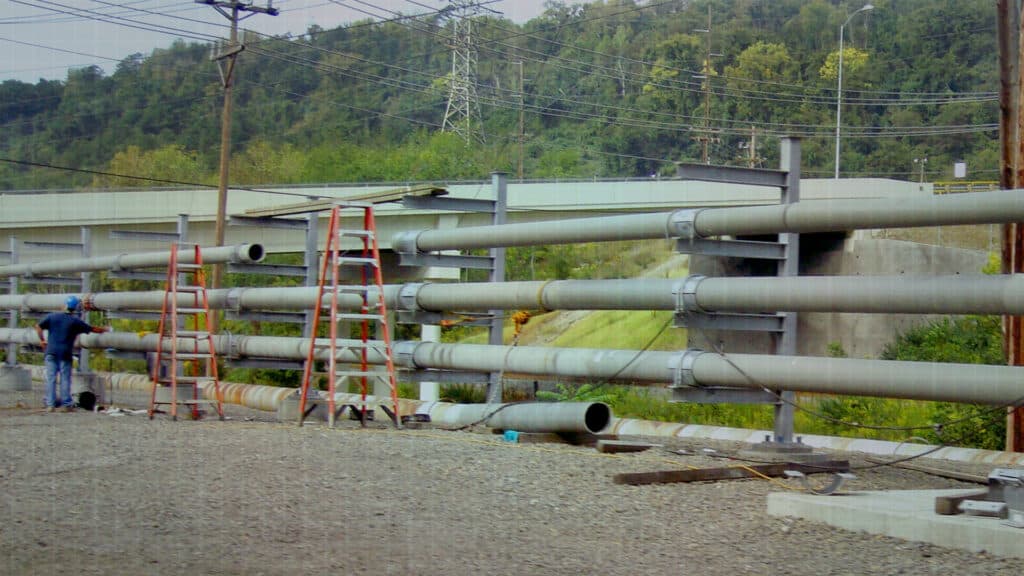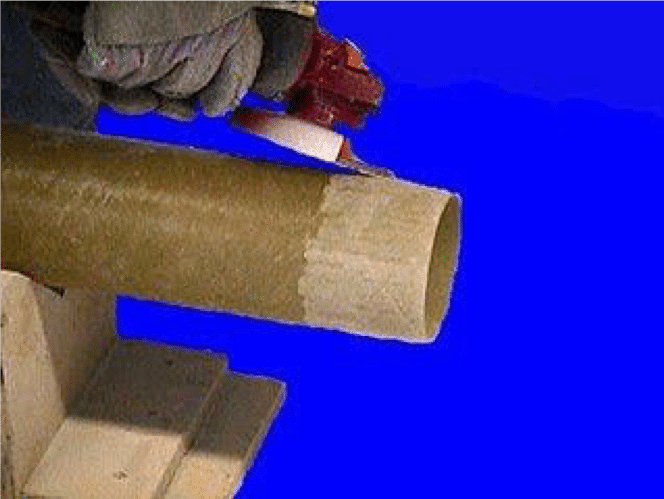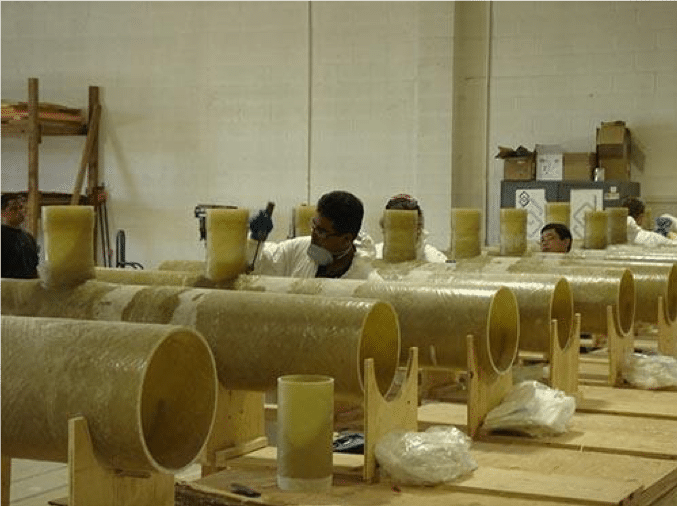Please note, this is a technical article describing the steps to a successful FRP joint installation. If you are looking for information on RPS Field Service installation, please visit the Field Service page.
In our previous article, we looked at basic principles for designing and fabricating supports for an FRP piping system. In this, our final article in the series, we are going to take a look at installation of FRP piping systems.
While installation might not typically be considered as part of the pipe system design, it is such an important part of a successful system that we believe it needs to be emphasized here. Without doubt, more issues arise in FRP piping systems due to improper installation than due to any other single cause. There are a number of steps that must be followed to provide assurance that problems won’t arise later, and also to comply with the requirements of ASME NM.21.



